64 Audio Duo Review: Complementary Service
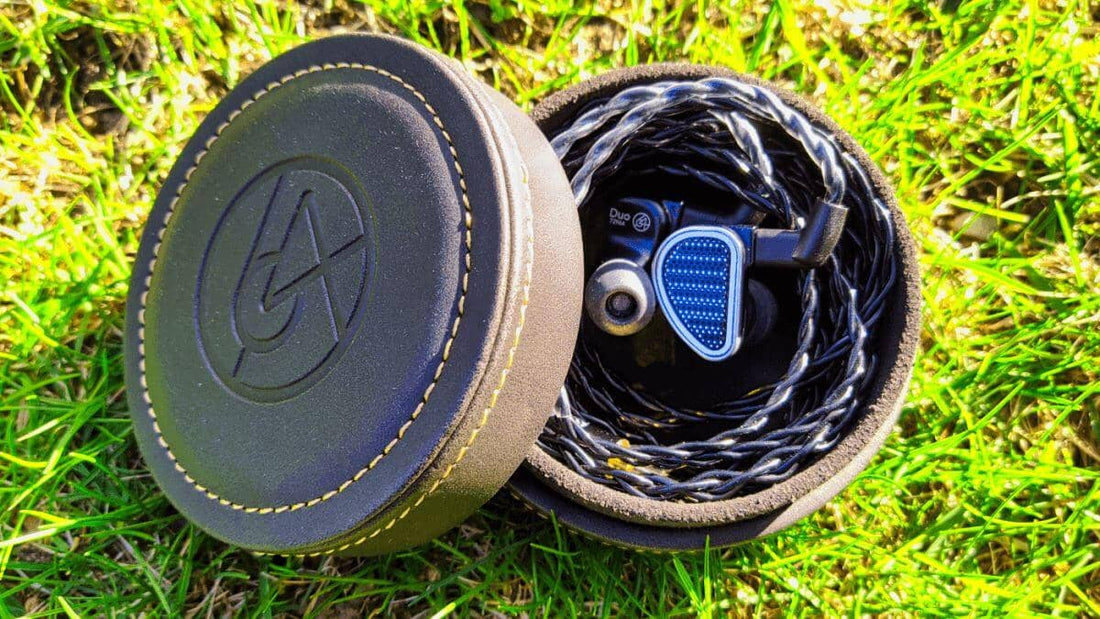
Review written by @Fc-Construct
Loaner unit provided by headphones.com
Introduction
64 Audio is a brand I know little about. What I do know is that 64 Audio is arguably the most successful Western IEM company with universally acclaimed products like the U12T. I also know that 64 Audio is the darling of my friend Precogvision’s dreams. With qualifications like these, I decided to dive into the 64 Audio IEMs and do a series covering all the ones I can get my hands on courtesy of headphones.com.
And for my first foray into the brand, I decided to go with the $1,200 64 Audio Duo as it’s probably the most unique of 64 Audio’s products. Unlike the other 64 Audio IEMs, the Duo sports a 1 DD + 1 BA hybrid setup and an open back design. While 1 DD + 1 BA setups are common, open back shells are still relatively rare in the IEM space. I’m curious to see how this combination plays out, especially as it seems like 64 Audio may have a few tricks up its sleeve with its marketed tia, Apex Core, and Wave Sync technologies.
64 Audio Duo Open-Back In-Ear Monitor– Product Summary
- Reasons to buy
- Comfortable
- Open soundstage
- Unique sound presentation
- Reasons not to buy
- Overly coloured tuning
- Expensive
- Low isolation
 |
Get the 64 Audio Duo In-Ear Headphone for the best available price at headphones.com. |
Build and Comfort
My loaner unit didn’t come with the full accessory set, so I won’t go through all the details of that in this review. What I did get was its stock cable and carrying case. The case is a generic round-shell case that’s a little on the large side but comfortably holds the IEMs in. The 2-pin cable is… non-ideal. Not the worst cable I’ve ever come across but is one I would definitely swap out. It feels very plasticky with a dose of cable noise and memory.
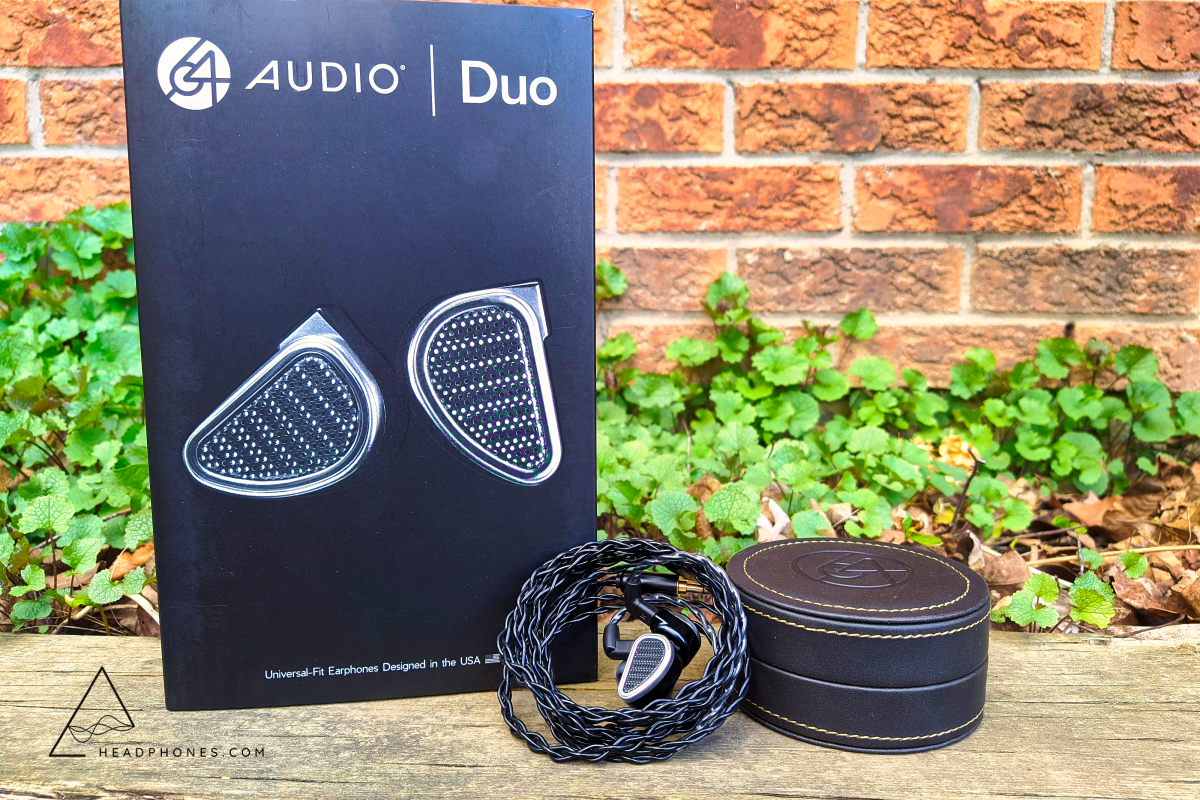
The most striking feature of the Duo is a perforated grill on its faceplate that covers slit-like opening similar to the open cups of a planar headphone. Interestingly, this isn’t the only part of the Duo that’s open. There seems to be a large vent hole at the very bottom point of the Duo’s shell. Other than that, the Duo’s design is straightforward and ergonomically shaped. Its nozzle is a very reasonable 5 mm in diameter and isn’t overly short or long. While the shell is fully built out of metal, it’s surprisingly light. I find the Duo to be very comfortable. I’m not sure if it’s 64 Audio’s technology or the fact that its vented but I don’t feel any pressure build up with the Duo. The downside of course is the relative lack of isolation. That said, the Duo doesn’t leak sound all that much. Think of these “open back” IEMs as being highly vented rather than truly open back like headphones are. I wouldn’t worry about it annoying nearby people unless you’re listening extremely loudly in a quiet environment.
Frequency Response and Tuning
My first impressions were negative. The Duo is a timbrally challenged IEM. There’s a significant amount of lower mids bloat, off-natural vocals, and unevenness in the treble. Colored, if you want to be polite. To be honest, its tonality reminded me of ChiFi from a few years back. Except I noticed the Duo does a surprising level of technical chops after I got over my initial shock over its frequency response. More on that later. At any rate, the Duo was unnatural enough that I put it aside after two songs and listened to a couple other IEMs for a sanity check and a palate cleanse.
Coming back to the Duo and giving it some more ear time was when I finally accommodated to its sound. While the Duo still sounds quite colored, it’s not to the point that it’s overly distracting. The bass is absolutely elevated. Midrange has the aforementioned lower mids bloat and an upper midrange recession. It’s here in this skewed midrange that gives the Duo its colored sound. Treble is hard to pin down. Its unevenness gives rise to a strong lower treble transient attack and an upper treble peak somewhere for the occasional sparkle. Yet, the Duo isn’t exactly an airy IEM.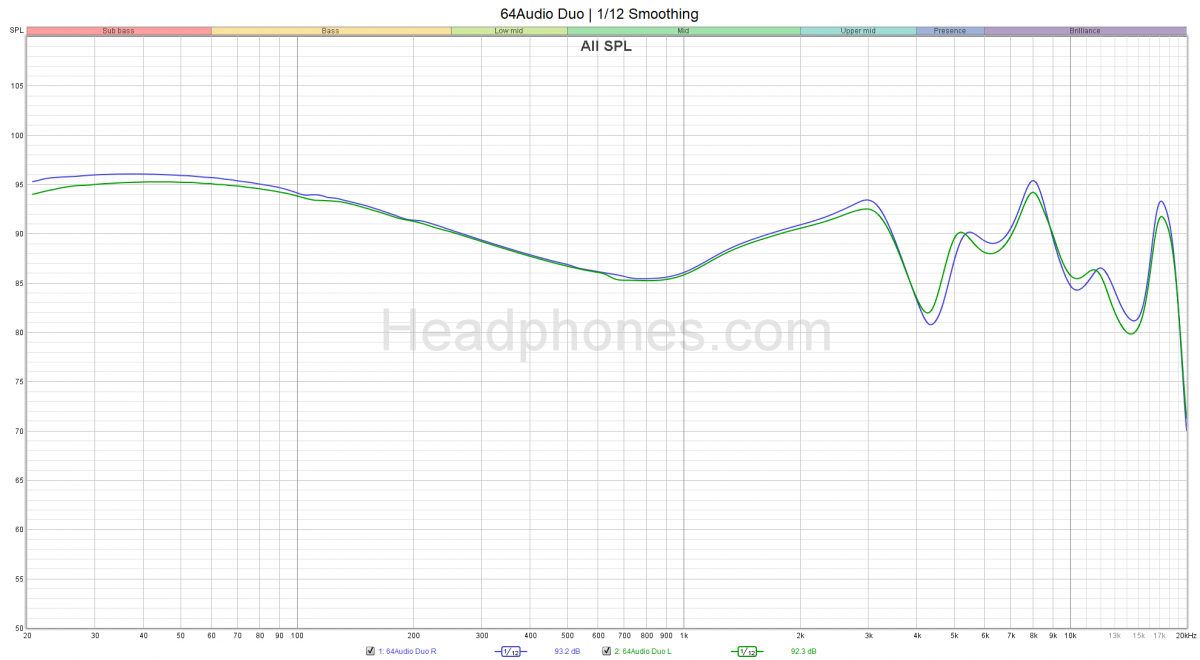 Frequency response of the 64 Audio Duo. Measurement taken with an IEC-711 clone microphone. Comparisons can only be made relative to other measurements taken by this specific microphone. A peak at about 8 – 10 kHz is likely an artifact of the measurement rig and may not exist as depicted here. Measurements above 8 kHz are not accurate. If possible, reference multiple measurements.
Frequency response of the 64 Audio Duo. Measurement taken with an IEC-711 clone microphone. Comparisons can only be made relative to other measurements taken by this specific microphone. A peak at about 8 – 10 kHz is likely an artifact of the measurement rig and may not exist as depicted here. Measurements above 8 kHz are not accurate. If possible, reference multiple measurements.
Looking at the measurements, it seems like it lines up pretty well with my thoughts. There’s a lot of bass bleed into the lower mids. While the upper mids and pinna gain look reasonable despite the massive 4 kHz dip, the overbearing presence of the lower mids is enough to throw off the midrange balance. Speaking of the dip, the contrasting 5 kHz peak is likely what’s giving rise to a sharp transient attack for hats and cymbals. It’s hard to interpret what’s happening in the upper treble given the lack of measurement accuracy in that region, but we can see that there isn’t much treble (excluding the artificial 8 kHz peak) until the very edge of the upper treble where it likely has negligible effect given the lack of musical energy in that region.
Instrument Notes
Drums
There’s quite a bit of midbass boominess here rather than a sense of slam. Unfortunately, the lower mids bloom is diluting the impact of these notes and definition is lost. Together, it makes the kick and low toms blur into each other. Notes have a big, blunted oomph to them. On the upside, the DD of the Duo imparts a certain grittiness, adding a much-needed subtle flavour to the sound. Snares have a thick body and while its characteristic crack does give it some definition, its energy is dulled on the Duo as a result of the large 4 kHz dip.
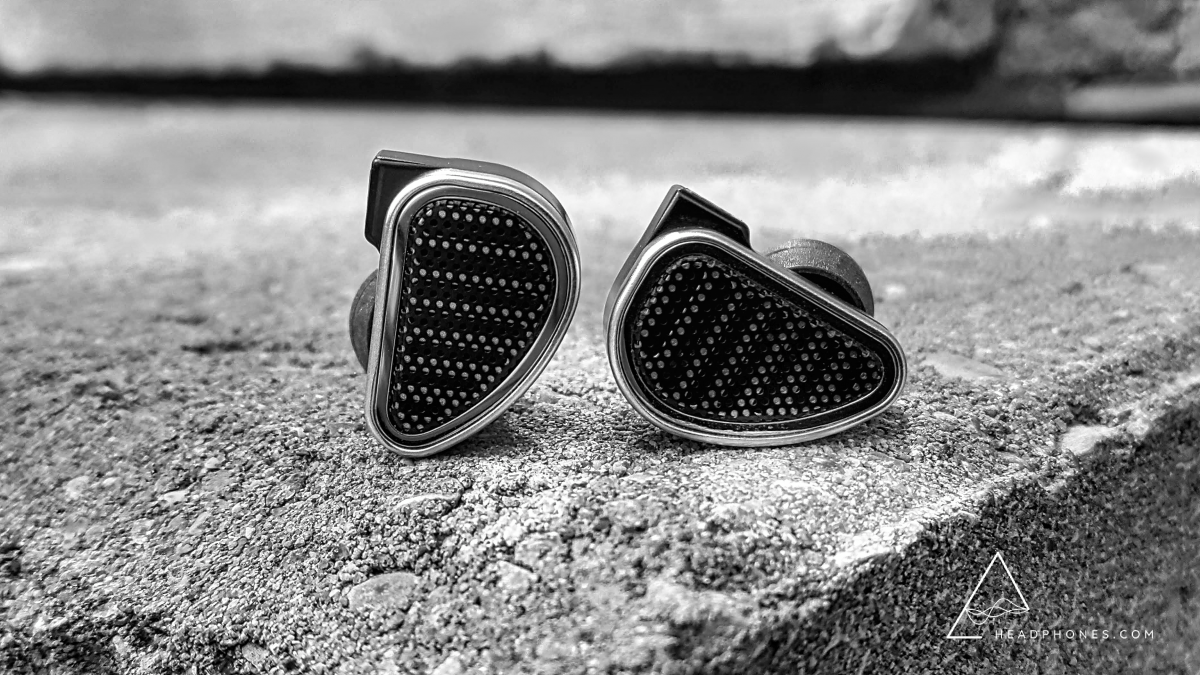
Hats and cymbals are the instrument that best highlights the quirks of the Duo’s sound. That lower treble transient attack I talked about above is most apparent here and sticks out like a sore thumb especially if the drummer is hitting a consistent pattern on the hats. These notes are sharp, crisp, and sometimes crass. To be frank, I found it distracting at times. To a lesser extent, a similar effect is found with the tambourine. With the Duo’s mid treble dip, the emphasis of the hats and cymbals are at the point of attack while delicate note decay is relegated to the side. I’m tempted to attribute the hats and cymbals sound to BA timbre especially when contrasted against the DD dominated drums.
Guitars/Strings
With such a large helping of low end, the bass guitar is clearly heard on the Duo. It has decent definition and nicely “fills the room”, so to speak. Interestingly, the Duo is quite musical when it comes to electric guitar licks and acoustic guitar finger picking. Short passages are highlighted in ways I haven’t heard before, making familiar songs sound fresh and unique. It doesn’t happen in every tracks but when it does, it’s a very pleasant experience. It’s all the more odd, then, that electric guitars outside of these brilliant short passages have little bite and can sound like a slog due to the overabundance of lower mids and abrupt upper mids dip.
Vocals
I’ll be honest here. The tonality of vocals on the Duo are not great. They aren’t “sweet”, they aren’t “lush”. They’re passable. The best thing I can say about them is that they can sometimes accentuate the creaminess in the vocals of certain male singers. Overall, voices are thick and lacking air, pulled back and relaxed. At least they aren’t sibilant. That said, vocal layering is pretty good. The Duo is able to distinguish vocalists while blending their harmonies. 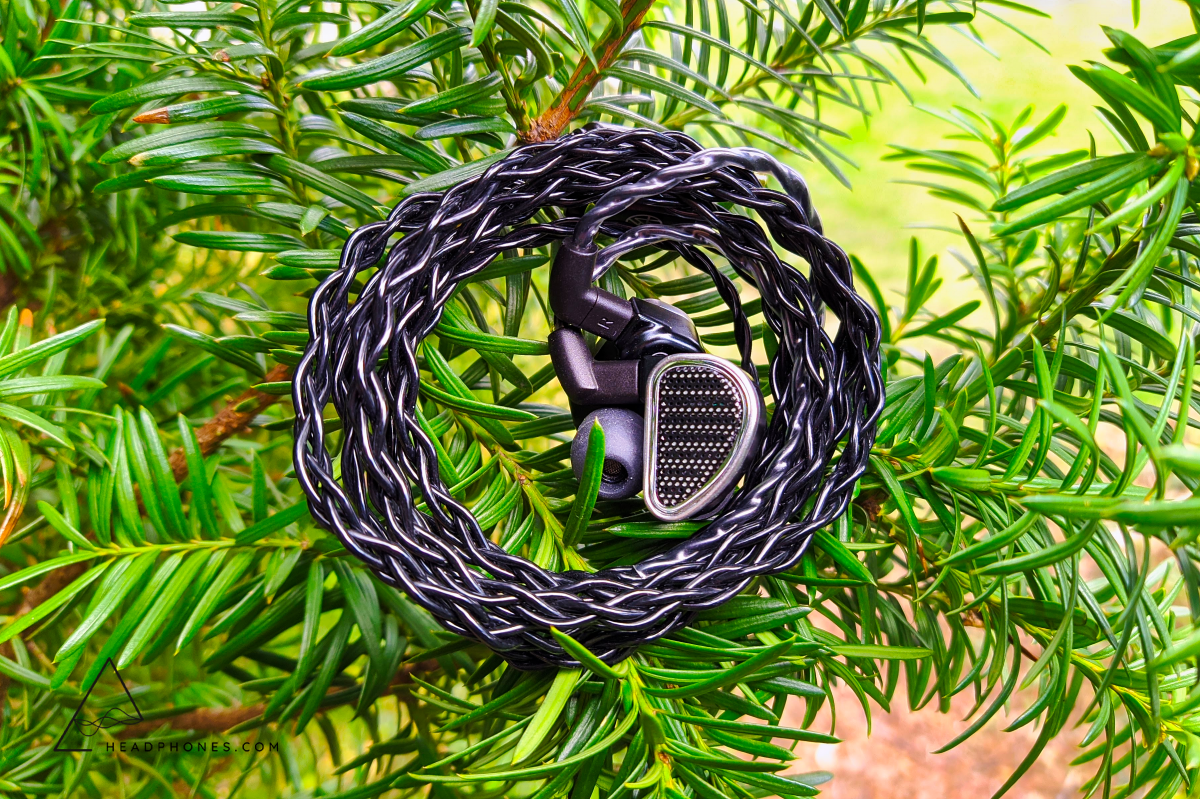
Presentation
Staging and imaging on the Duo are one of its standpoints. Horizontal stage is generous and the pulled back vocals gives a sense of depth. Stage height however is lacking. Imaging isn’t pinpoint accurate but there’s sufficient nuance here. More importantly, the Duo has an openness to its sound that I look for thanks to its open back nature. It helps to diminish the in-your-head, closed in feeling that a lot of IEMs have and brings a more comfortable and enjoyable listening experience.
I don’t think the Duo is a very resolving IEM in the sense that it captures the little nuances or trailing ends of tones. But at the same time, it can really highlight notes that I never noticed before. I have a theory that the perception of resolution is partly influenced by simply hearing things differently. In other words, the Duo is so colored that instruments have a uniqueness in their presentation that stands out and steals my attention. This is most apparent with midrange focused instruments like the guitars as mentioned above. It creates an illusion of resolution on the Duo. Ironically, the novelty wore off as I spent more time with the Duo and got accommodated to its tuning. Fewer and fewer tracks had moments where I would notice an intriguing passage or hear a new note. It really is a double-edged sword.
As for the rest of the Duo’s technical performance, it’s generally fine. Instrument separation is alright. Layering is good as it takes advantage of the Duo’s staging. The Duo does have a decent sense of dynamism though that may be a product of all its bass.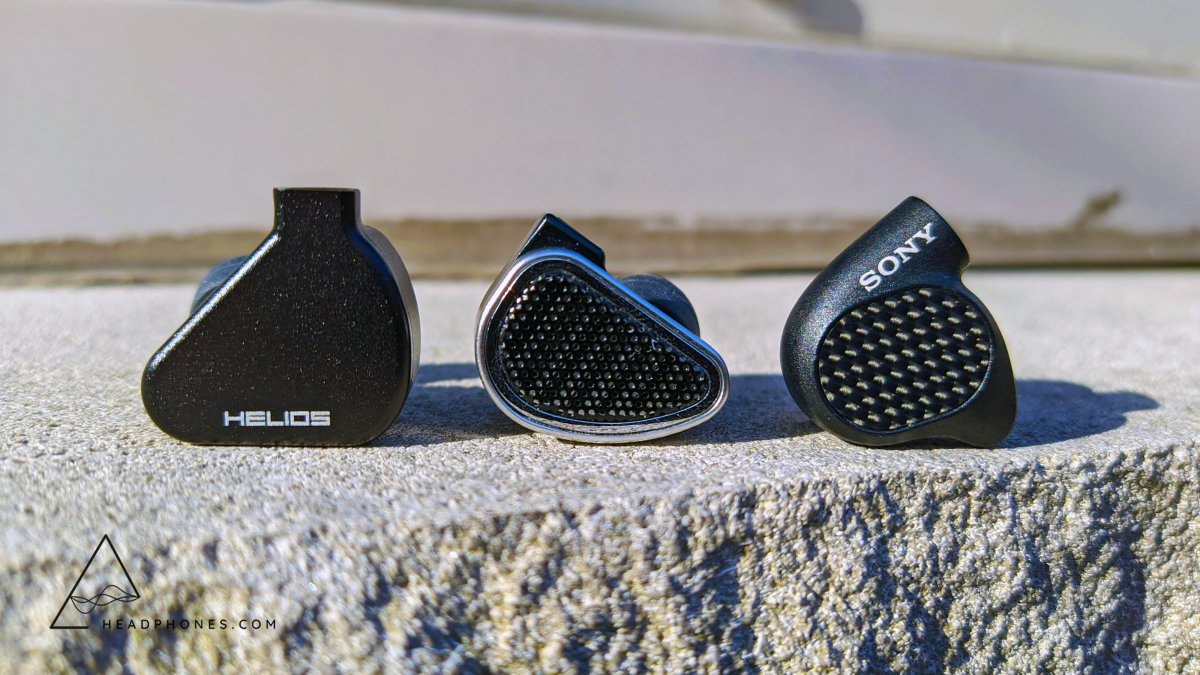
Should You Buy It?
No, not if its going to be your only IEM. The 64 Audio Duo is best suited as a complementary IEM, one that acts as to mix up your listening and every now and then. This way, music on the Duo will have a fresh novelty to it as its contrasted against more neutral IEMs in your collection. Of course, this is easier said than done. The Duo is a $1.2k IEM, certainly not cheap by any means. Whether intentional or not, the Duo is clearly a luxury product. I guess what I’m trying to say is, you’ll know if you can afford it. If you can afford it, I don’t think it’s a bad buy at all. I think that as hobbyists, sometimes we seek out more than just “pure sound quality” but rather unique experiences to challenges our senses and broaden our perspectives. The 64 Audio Duo offers a glimpse that.
One final note is that you may have noticed that I didn’t make any comparisons to other IEMs in the $1,000 range or so, such as the recently reviewed Symphonium Helios. The truth is, I didn’t feel like it was necessary. The Duo so different from its contemporaries that writing any comparisons would have been like writing two whole reviews anyway. And to be honest, this was part of the reason I chose to review the Duo first from the 64 Audio lineup. It’s a unique sounding IEM that, in my eyes, stands alone from the rest of the product stack or its competition. I hope you’ll join me as I take a look at the more traditional offerings from 64 Audio in my upcoming reviews.
-Fc-Construct
---
Buy the 64 Audio Duo here for the best available price.
Discuss the 64 Audio Duo on the HEADPHONE community forum here.
---
